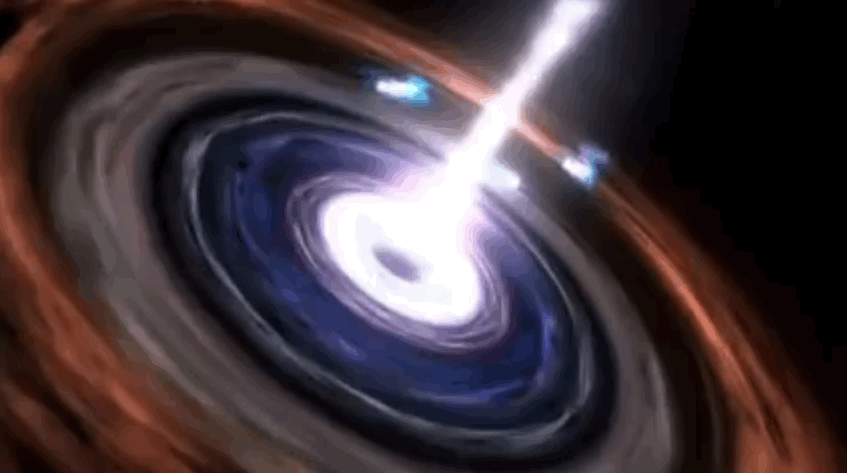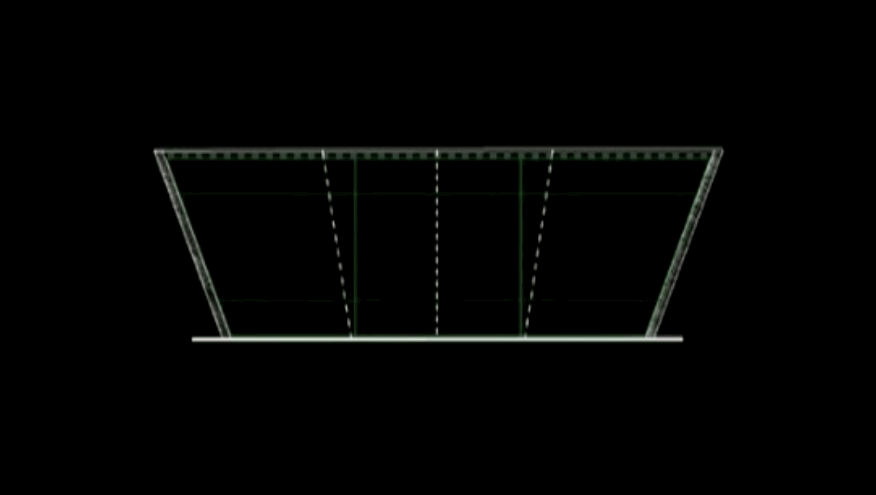
Image of the International Space Station. The newly-installed Alpha Magnetic Spectrometer is visible at center left.
Some scientists are reluctant to ring that bell just yet, saying there could be other reasons for the results, but one potential explanation of the latest results from a cosmic ray detector in space is that it is the first detection of the mysterious dark matter material that has eluded scientists' understanding for decades.
These results came from the space-based Alpha Magnetic Spectrometer, sent to the International Space Station in May, 2011 on the space shuttle Endeavor. The AMS detects energetic particles, called cosmic rays, which rarely make it through Earth's atmosphere but are prevalent in space - hence the need to place the detector up on the ISS.
Just like how blue light has a more energy than red light, cosmic rays come in different energy values.
The highest-energy cosmic rays, which are some of the most energetic particles in the universe, mainly consist of protons and neutrons.
At lower energies, however, cosmic rays contain a larger variety of particles like protons, electrons, and their antimatter counterparts: antiprotons and positrons, and it's these matter-antimatter pairs that AMS scientists study.
Although scientists are unsure about where cosmic rays come from, the particles that comprise these rays may be one piece of the dark matter puzzle.
So far, scientists have only observed dark matter's gravitational interaction with visible matter, that's how we know it's there. We have no idea what's causing this gravity, though - we haven't directly detected the theorized particles that make up this mysterious material that doesn't seem to interact (other than gravitationally) with normal matter like light and the particles that we know and love, which is what makes it invisible, and therefore "dark" to most instruments normally used to understand our universe.
To know so little about what makes up 26.8 percent of our universe is a huge gap in our overall understanding of the cosmos, which is why the dark matter mystery is so confounding. Instruments like the AMS hope to shed light on this dark puzzle.
To feel out the dark matter in our universe, the AMS uses layers of detectors, shown below, to measure the speed and energy of particles in cosmic rays:
If dark matter is comprised of some kind of particle, the way that "normal" visible matter is, then some of these particles are likely to collide with one another, and that's something we can potentially detect. The result, some scientists theorize, may yield a series of particles that eventually decay into the electrons, positrons, protons, and antiprotons that make up our "visible" universe.
These four particles originate from many other sources throughout the universe as well, including cosmic rays, supernovae, and dense, rotating stars called pulsars. But each source produces a different fraction of electrons to positrons and the other particles. For example, supernovae produce equal amounts of electrons and positrons. Getting a good grasp on the particle make-up of different matter sources can help us identify dark matter.
Unfortunately, this signature does not uniquely distinguish dark matter from other sources like pulsars, which also produce an unequal amount of positrons to electrons.
To eliminate the possibility of a pulsar source, scientists are now measuring the number of protons and antiprotons in the AMS data because pulsars do not produce those particles.



